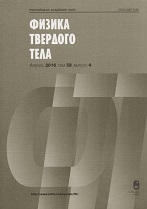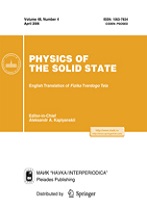|
This article is cited in 6 scientific papers (total in 6 papers)
Semiconductors
Surface modification of ZnO nanowires with CuO: a tool to realize highly-sensitive H2S sensor
C. P. Goyalabc, D. Goyala, N. S. Ramgird, M. Navaneethana, Y. Hayakawac, C. Muthamizhchelvana, H. Ikedabc, S. Ponnusamya
a Functional Materials and Energy Devices Laboratory, Department of Physics and Nanotechnology, SRM IST, Kattankulathur, Tamil Nadu 603 203, India
b Graduate School of Science and Technology, Shizuoka University
c Research Institute of Electronics, Shizuoka University,
Hamamatsu 432 8011, Japan
d Technical Physics Division, Bhabha Atomic Research Center,
Mumbai 400 085, India
Abstract:
Hydrothermally grown ZnO nanowires (NWs) have been successfully synthesized and surface modified by an ultrathin layer of CuO using dip coating technique to achieve a highly sensitive H2S sensor. XRD analysis confirmed the hexagonal structure of ZnO without any Cu sub-oxide peaks. After CuO modification, the peak shift was observed in the electronic states of O and assigned to the defects and increase in adsorbed oxygen species. Similarly, a red shift was also observed in the band edge absorption after CuO modification arising due to defects. The sensor film showed an overall n-type character as confirmed using I(V) characteristics. Interestingly, sensor response kinetics towards H2S were enhanced after CuO modification. The highest sensor response value of 298 was measured towards 10 ppm H2S at 150∘C for CuO : ZnO NWs sample having 1.26 at.% of Cu. This improved sensor response has been attributed mainly to the formation of randomly distributed p–n nano-hetero-junctions between p-type CuO and n-type ZnO over the sensor surface. In particular, the p–n nano-hetero-junctions collapsed due to conversion of semiconducting CuO into metallic CuS after the unique interaction with H2S.
Keywords:
ZnO nanowires, gas sensing, H2S, surface modifications, p–n hetero-junctions.
Received: 29.10.2020
Revised: 29.10.2020
Accepted: 03.11.2020
Citation:
C. P. Goyal, D. Goyal, N. S. Ramgir, M. Navaneethan, Y. Hayakawa, C. Muthamizhchelvan, H. Ikeda, S. Ponnusamy, “Surface modification of ZnO nanowires with CuO: a tool to realize highly-sensitive H2S sensor”, Fizika Tverdogo Tela, 63:3 (2021), 375; Phys. Solid State, 63:3 (2021), 460–467
Linking options:
https://www.mathnet.ru/eng/ftt10155 https://www.mathnet.ru/eng/ftt/v63/i3/p375
|


| Statistics & downloads: |
| Abstract page: | 95 | | Full-text PDF : | 30 |
|





 Contact us:
Contact us: Terms of Use
Terms of Use
 Registration to the website
Registration to the website Logotypes
Logotypes









 Citation in format
Citation in format 